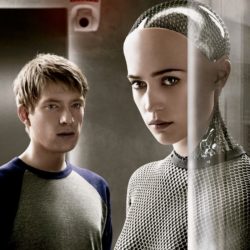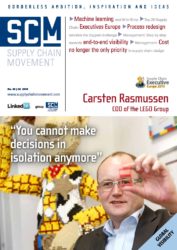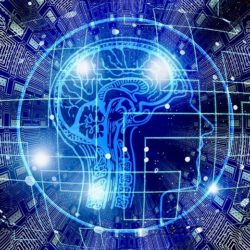Machine learning and AI in films

Countless companies are exploring the potential use of artificial intelligence and machine learning in their supply chains. Five films and a TV series could help them to better understand these technologies and their implications.
By Martijn Lofvers
Companies need smart systems to help them turn the ever-increasing volumes of big data into useful information. Having said that, numerous companies still struggle to manage their ‘small data’, i.e. the structured output of internal systems such as ERP, CRM, WMS, APS, TMS, etc. When it comes to big data, companies are keen to make use of artificial intelligence (AI) and machine learning, but many managers are still unclear about the differences between the two. AI is a collective term for computer systems that can perform human tasks. Machine learning is a form of AI. It uses algorithms and statistical models to recognize patterns and perform tasks without explicit instructions. Smart inventory management software recognizes the probability distribution of individual products based on historic demand. Advanced forecasting software can predict how the weather will affect the demand for specific products. Another practical application of machine learning is the use of traffic information to estimate actual journey times and delivery times.
Learning from the movies
Hollywood movies can sometimes come close to predicting the future. The film Back to the Future 2 (released in 1989) featured a whole range of futuristic technologies (including augmented reality, hand-held computers, fingerprint recognition, videoconferencing and wearables) that have since become reality. Since the start of the millennium, several movies have dealt with the topics of complex mathematics, artificial intelligence and self-learning systems. The films listed below put this technological evolution into a historical perspective and show how things might develop in the future.
1939-1945: The Imitation Game (2014)
During the Second World War, the eccentric mathematician Alan Turing joins the British secret service to crack the codes of Germany’s military encryption device called Enigma. Turing and his colleagues develop a mechanical computer to decipher the millions of possible permutations of the Enigma codes. This problem can be compared with the business challenge of planning the shortest route when visiting multiple destinations.
1950s: A Beautiful Mind (2001)
John Nash, a mathematics student at Princeton University, explains to his fellow students why a cooperative approach will achieve more success when flirting with girls in a bar than ‘every man for himself’. Ultimately, this insight leads to Nash winning the Nobel Prize for Economics for his revolutionary work on governing dynamics and game theory. The key takeaway for supply chain professionals is that collaboration with competitors can result in success.
2001-2002: Moneyball (2011)
Billy Beane, manager of the professional baseball team Oakland Athletics, is forced to look for replacements when a number of top players leave. Together with a young economics student from Yale University, he develops sabermetrics (the empirical analysis of baseball statistics) to identify undervalued players in order to build a successful team. This illustrates that, to create a successful supply-chain team, it is essential to match the various roles with the right diversity of profiles.
Near future: Her (2013)
In Los Angeles in the not-too-distant future, a lonely introvert who writes letters for a living buys an operating system that includes a virtual assistant. He ends up falling in love with that ‘female assistant’, who can learn and grow psychologically thanks to artificial intelligence. Nowadays, companies are increasingly using smart chatbots to handle customer service enquiries.
Near future: Ex Machina (2014)
Computer programmer Caleb Smith, who works at an internet company, wins a company competition to stay at the CEO’s remote country house. When he arrives, he discovers that the eccentric boss has built a robot in the shape of a woman, equipped with artificial intelligence. Caleb’s task is to investigate whether the robot woman is capable of developing thoughts and consciousness, i.e. real intelligence. The question is, will smart systems ever be able to completely take over the supply chain planning role? … … …
 Want to read more?
Want to read more?
Subscribe to the digital subscription to read the full version >>
or
select one of our annual or digital subscriptions to receive the next issue >>
This article was first published in Supply Chain Movement 35 | Q4 – 2019










